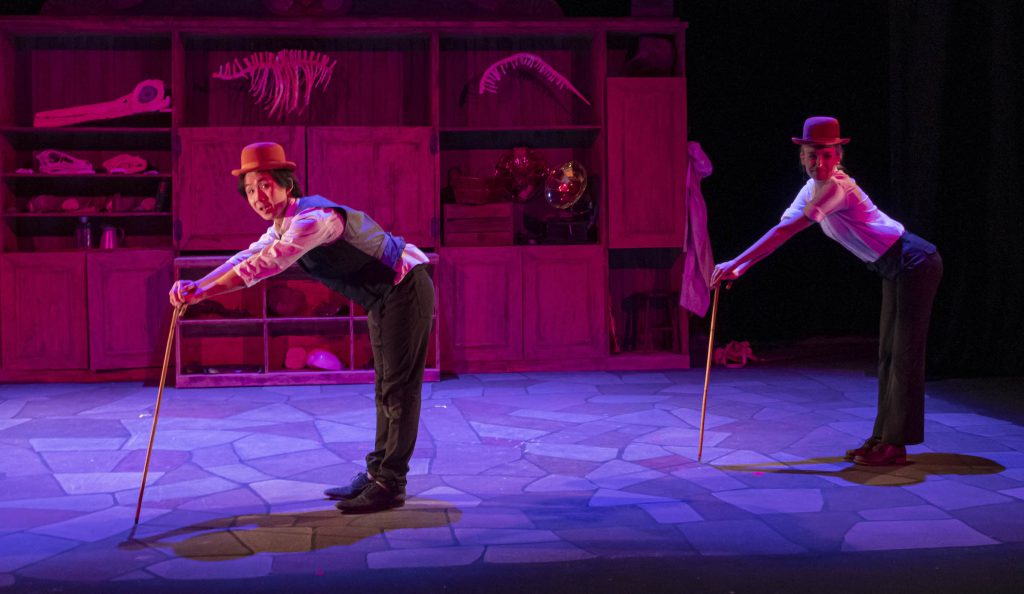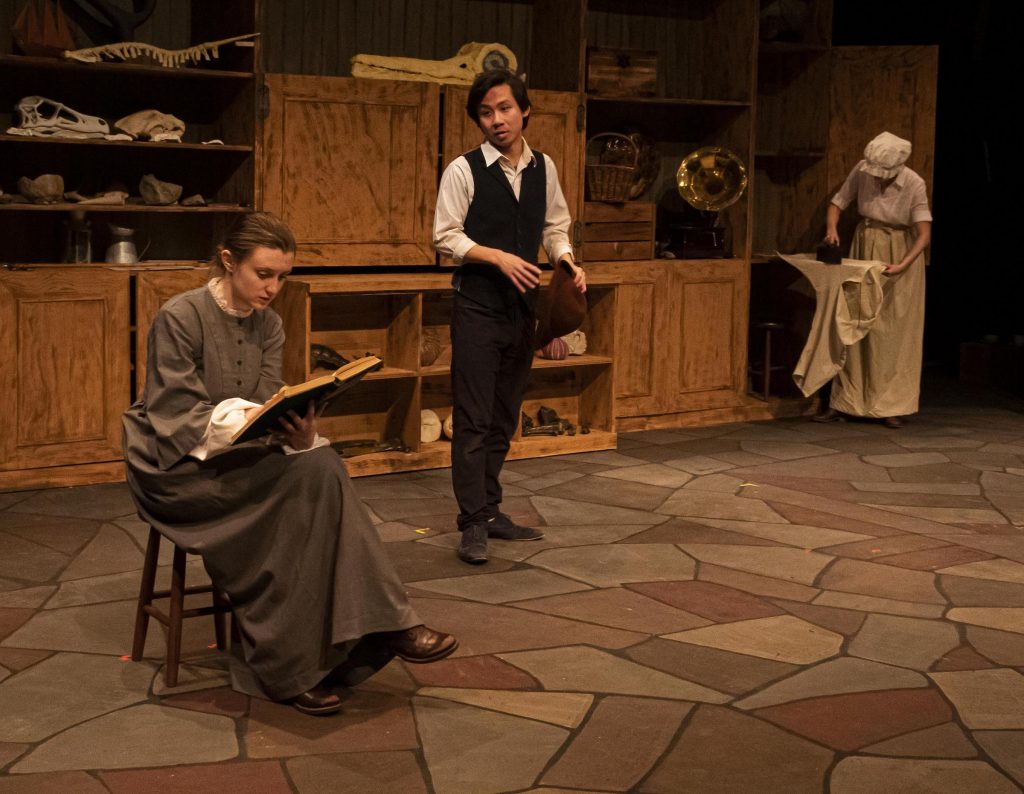
Credit: Nancy Caldwell
Online performances until February 14, 2021
Tickets from $26 at unitedplayers.com or 604-224-8007
Posted January 23, 2021
Mary Anning (1799-1847). Ring any bells? Not likely. And why is that? After all, she is known as “the greatest fossilist the world ever knew”, according to the British Journal of the History of Science. But born in 1799 into a working-class family and self-educated, she was a woman in a man’s England. And despite the fact that for many years – beginning in childhood – she supplied scientists with Jurassic period fossils picked up along the beach below the cliffs at Lyme Regis in Dorset, England, Mary was never recognized or given credit by the paleontologists who bought fossils from her. She discovered, perhaps, the first fossilized ichthyosaur and, initially mocked for suggesting a crocodile skeleton was a plesiosaur (“Crocodile, my arse”, Mary snorts), she was eventually credited with unearthing the first plesiosaur, a large, extinct marine reptile of the Mesozoic era. Yet it still seemed Mary’s story was going to go the way of the dinosaurs.
Playwright Helen Eastman resurrects Mary’s remarkable story in She Sell Sea Shells which premiered at the Edinburgh Fringe in 2019. It begins with little Mary, in the arms of one of her big sisters, being struck by lightning. Mary survived; the sister, along with another sibling, did not. Whether it was sheer dumb luck or Mary’s pig-headedness, it seems she was destined to survive and play a part in geological/paleontological history.

Credit: Nancy Caldwell
Eastman, a London Academy of Music and Dramatic Arts graduate and Artistic Associate at London’s Kings College, has a flair for physicality in the theatre and director Sarah Rodgers runs with it. The production is stylized and, working with choreographer Melissa Sciarretta, Rodgers has some of the scenes ‘danced’ – most notably the one in which the ten leading paleontologists of the period are listed. Performers Isaac Li and Hannah Pearson do a merry jig as the names roll out. The preparation of the fossils is cleverly mimed, too.
This physicality along with a stellar performance by Krista Skwarok as Mary serves the play extremely well. But with no great crisis, the story is interesting but somehow static. And although we admire Mary for her gumption and her quick wit, we don’t feel for her. Some anger, yes, at her being overlooked but not emotionally engaged.
Li and Pearson fill a variety of roles with the simple donning of a hat or other piece of clothing.

Credit: Nancy Caldwell
Brian Ball’s set is rustic in shades of brown with old wooden cabinetry and worktable. Especially sweet is the moment with two doors on the cabinet open to reveal – in startling colour – the Dorset seaside where young Mary has spent her childhood beachcombing. Lighting designer Brad Trenaman mostly keeps the light subtle and subdued, giving the overall effect of antiquity.
As was the case with the last United Players production, The Red Priest, the videography, under the direction of Chase Padgett – is excellent. It’s truly impressive how theatre companies have ‘pivoted’ and are delivering quality shows despite the limitations Covid-19 puts on them.
This is a handsome production, masterfully directed and with excellent performances. And it’s great inspiration for young girls who think paleontology is just for boys. Maybe it needs Mary to be struck by lightning again and have to fight like hell to stay alive. Or she sues the educated, upper-class, male academics and scientists for failing to credit her in their papers and books – and wins! Without much dramatic conflict She Sells Sea Shells feels more like biography – albeit interesting – than drama.

